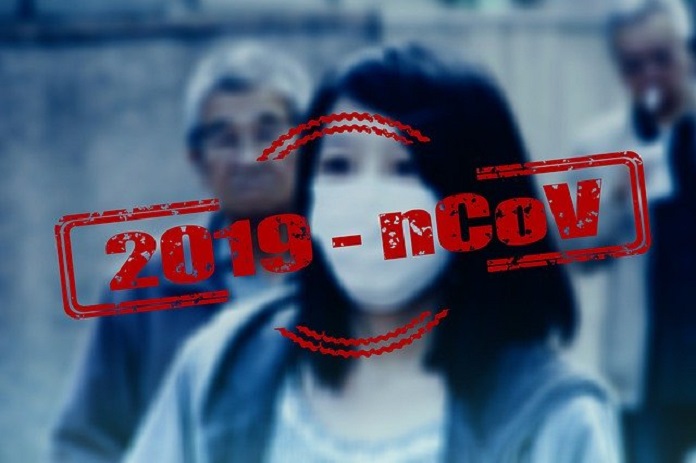Late last year there were disturbing reports of a mysterious outbreak of respiratory illnesses in Wuhan, China. Chinese authorities investigated this outbreak and quickly determined that a new coronavirus was the pathogen causing this disease. The called it 2019 novel Coronavirus (2019-nCoV). Coronaviruses normally cause mild cold symptoms but they have been known to be responsible for larger and more server epidemics. Two of the more infamous examples include severe acute respiratory syndrome coronavirus (SARS) and Middle East respiratory syndrome coronavirus (MERS). As a result, 2019-nCoV has quickly captured the attention of the international health community. Here we try to answer some of the most important questions surrounding 2019-nCoV.
Is 2019-nCoV a type of SARS or MERS?
2019-nCoV is a new type of Coronavirus. SARS and 2019-nCoV genetic sequences have 70% similarity but they are separate viruses. SARS, MERS and 2019-nCoV are all part of the Coronaviridae family of viruses, all of which are enveloped, single-stranded (positive-sense) RNA viruses.
Where did the virus come from?
Both SARS and MERS are zoonotic diseases meaning they initially occur in animals and then spread to humans. Bats and civet cats were the animal sources for SARS and camels carried MERS. 2019-nCoV is likely to follow a similar trend but the type of animal that is the source (reservoir) for the virus is unknown.
How is 2019-nCoV diagnosed?
Shortly after the outbreak of pneumonia in Wuhan, the Chinese authorities isolated the coronavirus responsible. They subsequently shared the genetic sequence of the virus, which allowed for the development of diagnostic kits. Researchers from the German Centre for Infection Research at the Charité University Hospital in Berlin were the first to develop a diagnostic test for the virus, weeks after the sequence data had been released.
Who has been infected?
Countries with confirmed cases of 2019-nCoV infection include China, Thailand, USA, France, Canada, Australia, Taiwan, South Korea, Singapore, Malaysia, Nepal, and Vietnam. There have been more than 2700 confirmed cases and 80 reported deaths.
In a study conducted on 41 patients with laboratory-confirmed 2019-nCoV in Wuhan, researchers found that most of the patients were men (73%) and the median age was 49 years old. These figures are likely to change as more information on viral transmission is collected.
How is the virus spread?
Healthcare workers have reportedly been infected with 2019-nCoV confirming that 2019-nCoV can spread from person to person. The exact mechanism of transmission is not yet known, however, is thought to be through respiratory droplets that spread by coughing and sneezing. There is a real concern regarding the increased travel during the Chinese New Year, as millions of people may be travelling during the holiday period. An estimated three billion trips would be made during this period with 15 million trips to Wuhan. In response to these concerns, the local government in Wuhan has suspended public transportation with the closure of airports, railway stations and highways into the city.
What are the symptoms?
The main symptoms of 2019-CoV infection include; fever, fatigue, dry cough, shortness of breath, pneumonia, and respiratory distress. The disease progresses at a swift rate with the duration of illness from onset to hospitalisation in seven days, with difficulty breathing occurring at day eight. This is followed by acute respiratory distress syndrome on day nine and mechanical ventilation at ten and a half days after infection.
Can I prevent myself from being infected?
There is currently no vaccine to prevent the transmission of 2019-nCoV, however, there are some precautions you can take to keep safe. The Centre for Disease Control recommends everyday preventive actions such as;
- Washing your hands regularly with soap for up to 20 seconds.
- Try not to touch your eyes, nose, or mouth with unwashed hands
- Avoid close contact with people who are sick
- Stay at home when you are sick
- Clean and disinfect frequently touched areas if you are sick
- Follow good sneezing and coughing etiquette – when sneezing or cough use a disposable tissue to cover your nose and mouth and dispose and wash your hands.
The World Health Organisation has also issued detailed guidelines for healthcare professionals who are likely to encounter the virus.
What is the treatment for a 2019-nCoV infection?
There is currently no antiviral treatment for 2019-nCoV. Healthcare professionals can only offer supportive care and treat the symptoms of the infection.
There are large gaps in our understanding of 2019-nCoV from epidemiology and human transmission to the best approaches to treatment. These uncertainties are a huge challenge to combating the disease, however, the speed with which a diagnostic test has been developed gives us hope that collaborative efforts from the international scientific community will help prevent and control the spread of this 2019-nCoV.
Written by Tarryn Bourhill, MSc. PhD Candidate
References:
- Wang, C., Horby, P. W., Hayden, F. G. & Gao, G. F. A novel coronavirus outbreak of global health concern. The Lancet, doi:10.1016/S0140-6736(20)30185-9.
- Huang, C. et al. Clinical features of patients infected with 2019 novel coronavirus in Wuhan, China. The Lancet, doi:10.1016/S0140-6736(20)30183-5.
- Parry, J. (British Medical Journal Publishing Group, 2020).
4. Hui, D. et al. The continuing 2019-nCoV epidemic threat of novel coronaviruses to global health-The latest 2019 novel coronavirus outbreak in Wuhan, China. International journal of infectious diseases: IJID: official publication of the International Society for Infectious Diseases 91, 264 (2020).
5. Anon. Wuhan Coronavirus (2019-nCoV) Global Cases <https://gisanddata.maps.arcgis.com/apps/opsdashboard/index.html#/bda7594740fd40299423467b48e9ecf6> (2020).
- CDC. Prevention & Treatment, (2020).
- Organization, W. H. Infection prevention and control during health care when novel coronavirus ( nCoV) infection is suspected: interim guidance, January 2020. (World Health Organization, 2020).
- CDC. Coughing & Sneezing, (2016).
Image by Gerd Altmann from Pixabay



